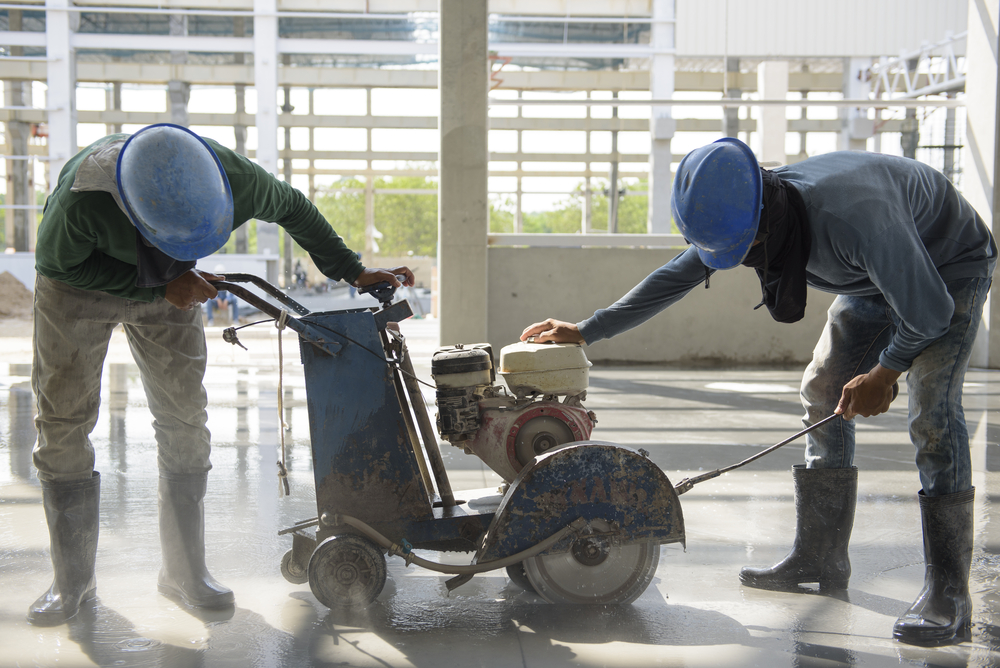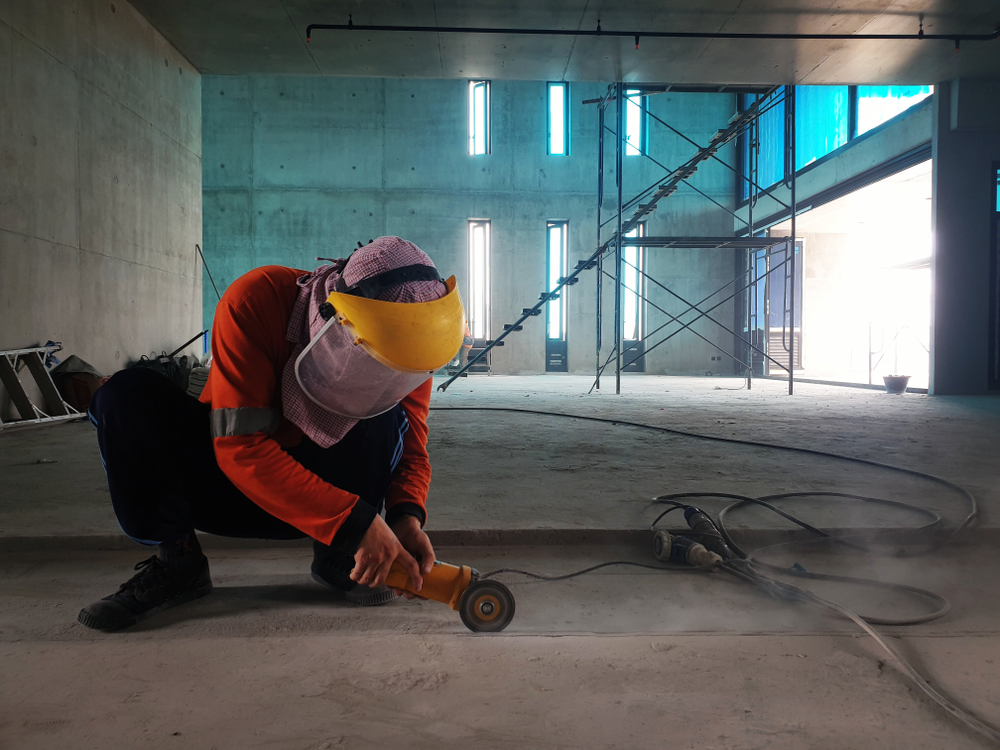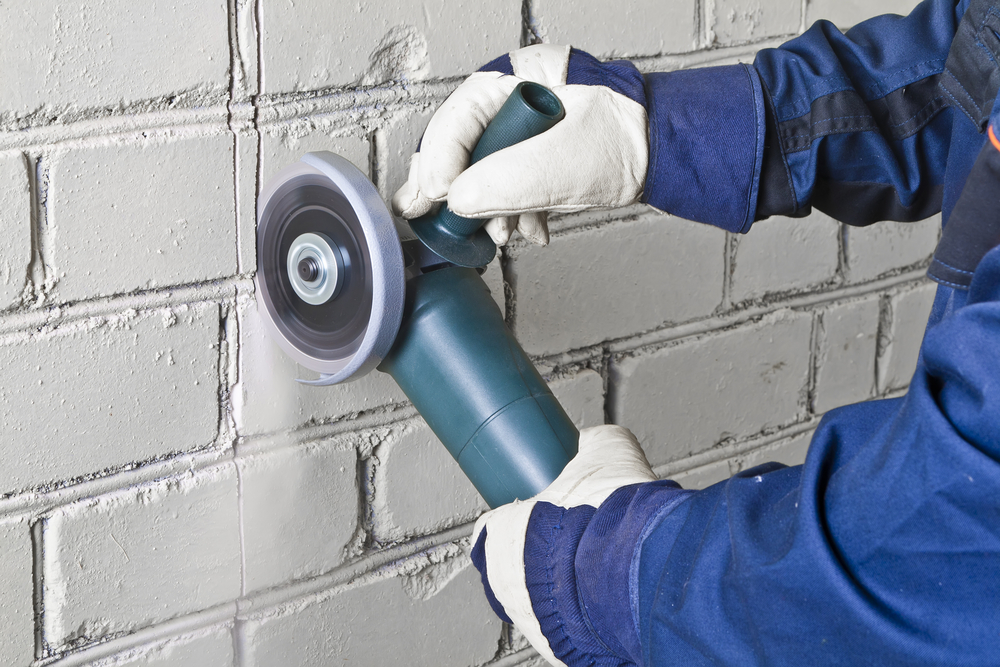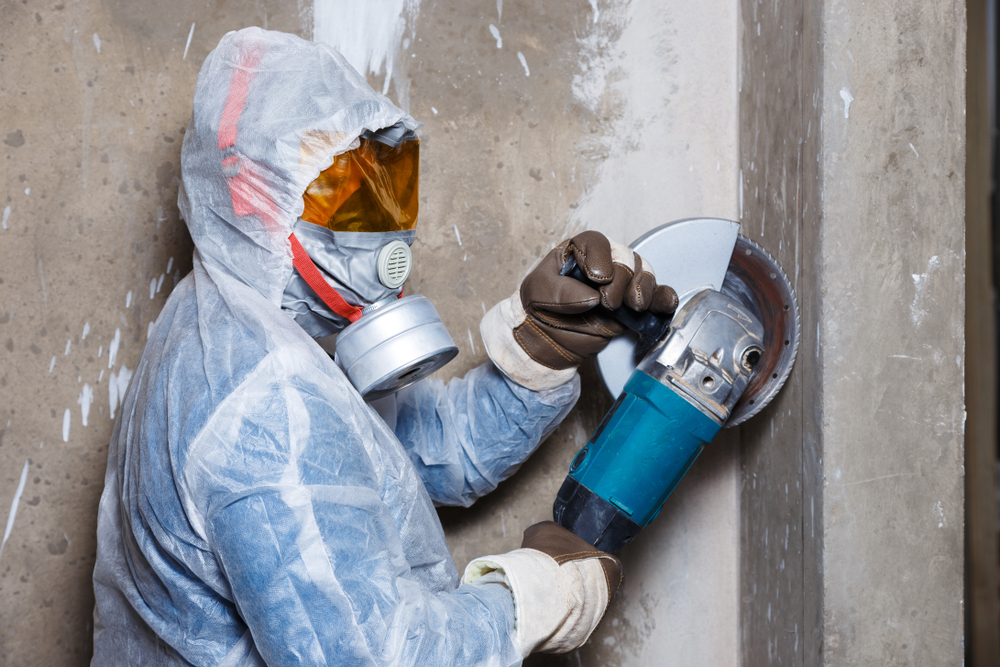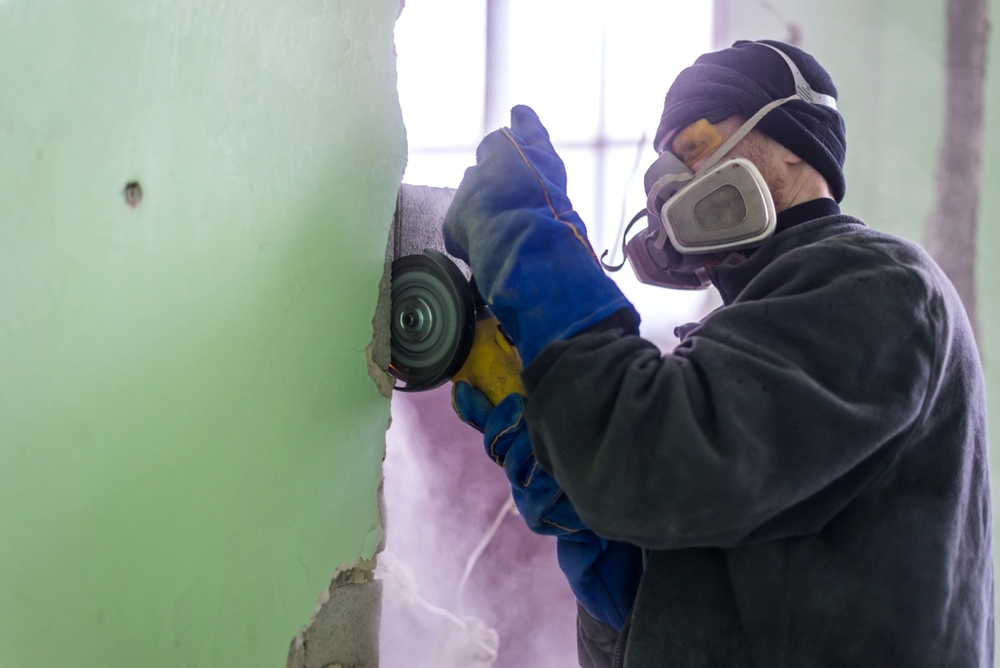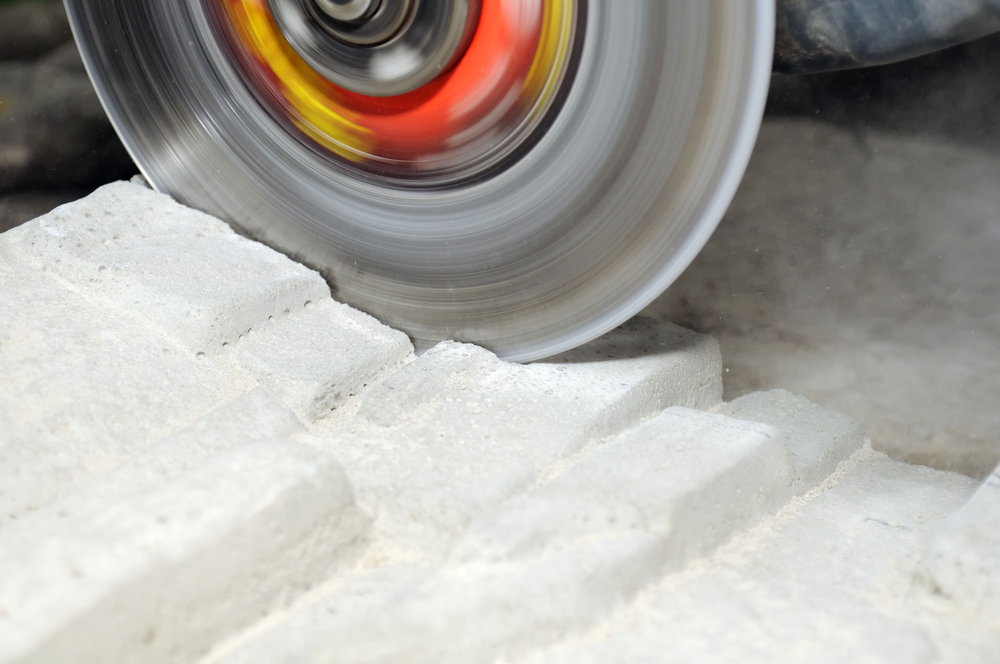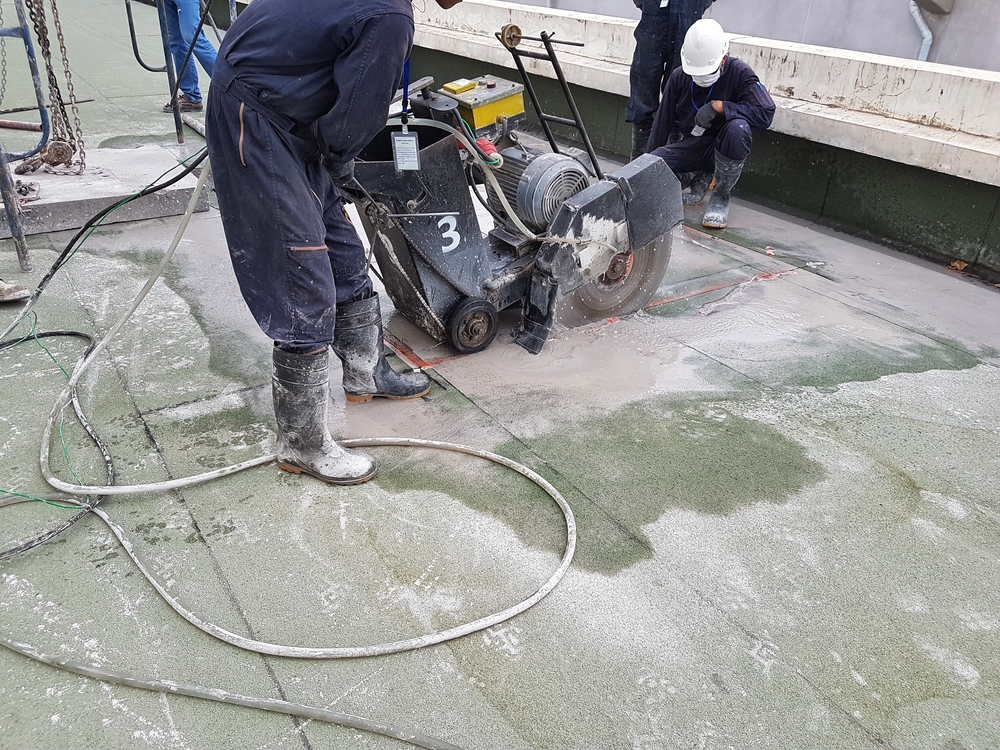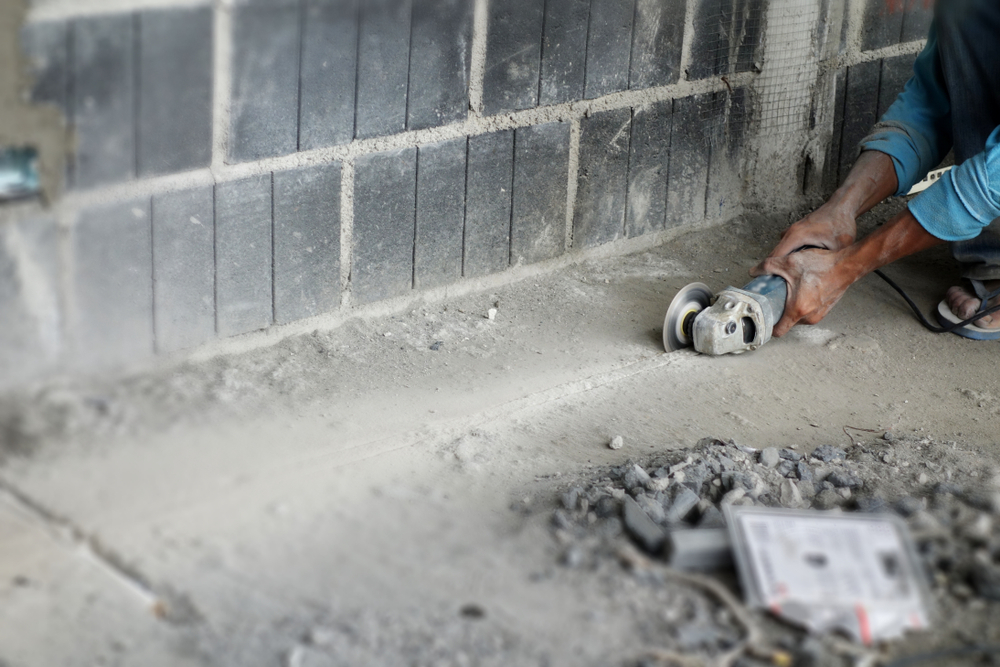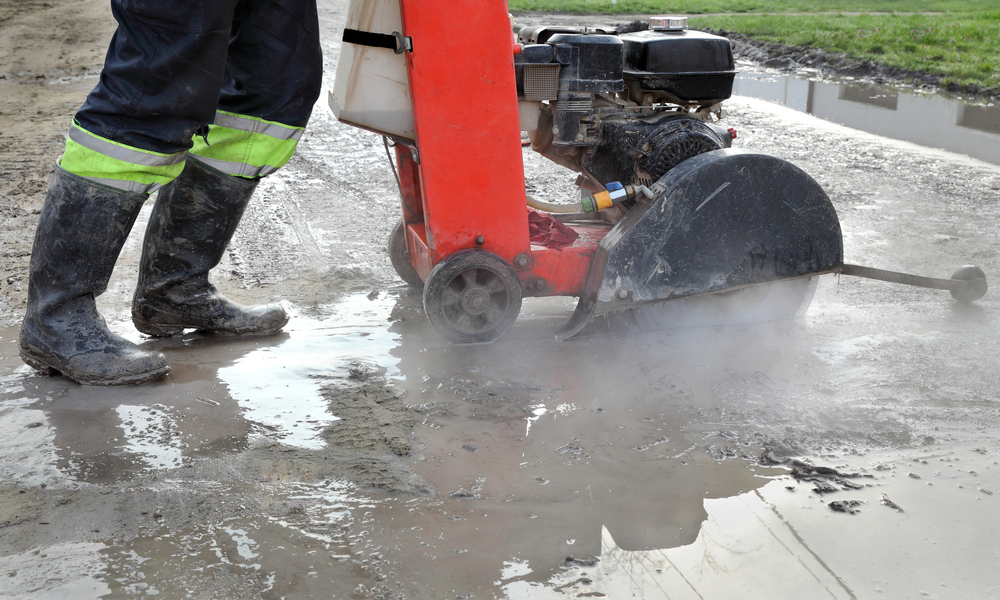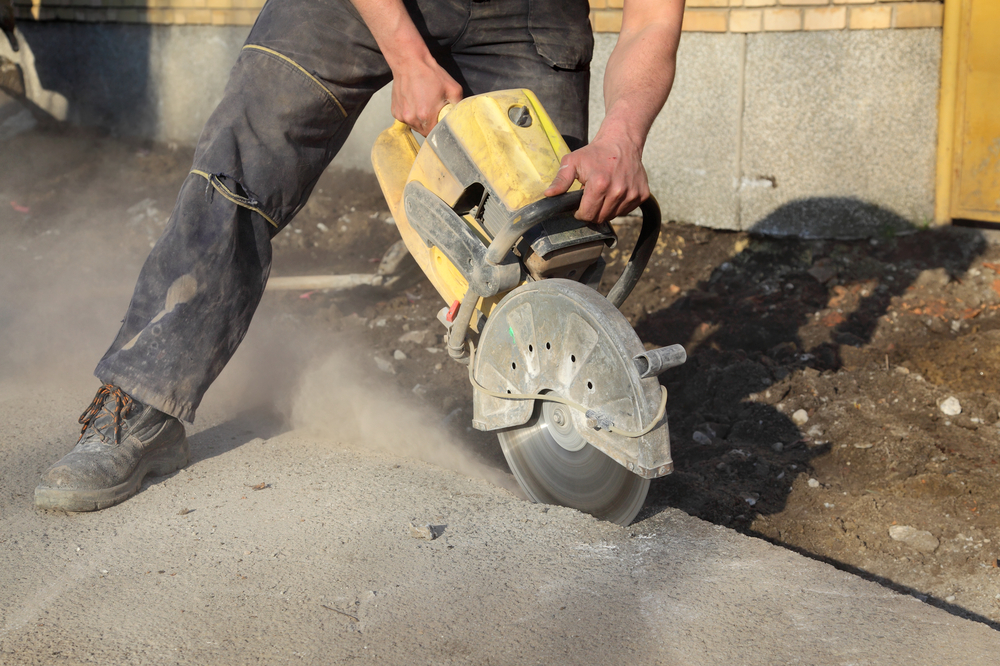Do you know what it takes to perform a perfect or flawless concrete cutting job? If not don’t worry, you are not alone.
There are many people out there, including seasoned construction experts, who don’t how to make clear and precise cuts using a concrete saw.
It’s by no means an easy task so don’t worry if you’re not sure how to do it.
There are many situations where you might find yourself needing to cut concrete.
For instance, you may have issues with the foundations of your home, or you may need to remove excess concrete blocks or extend your patio or access some drain pipes.
First Step Is Finding The Right Concrete Saw
Before you can begin cutting anything, you must establish which tool you are going to use. Conventionally, concrete saws are the best tools to cut through concrete blocks and slabs.
However, there are many different types of concrete saws out there today.
One saw may be perfect for a certain project you are working on today while the same saw may be completely useless for another cutting job you find yourself doing tomorrow.
It’s always advisable to do some due diligence when buying or renting a saw for a project.
Randomly choosing a saw can be the worst mistake you can make as it can lead to serious and permanent damage to the material you are cutting.
Worse still, you can also injure yourself while cutting because of using the wrong saw.
Decide on Whether To Use A Hand-held or Walk-Behind Saw
If you are engaged in a big concrete cutting job, it’s highly recommended that you go with heavy-duty walk-behind concrete saws.
Some of the jobs in this category include cutting through entire walls, floors and concrete slabs.
Walk-behind saws are not only more efficient for this type of task, they are also safer for the operator.
On the other hand, hand-held saws are better suited for smaller concrete structures that require professional customisation.
You can use hand-held concrete saws to make sharp cuts and clean rough corners. These saws are compact in size which makes them easy to handle.
An operator can maneuver easily through tight corners and spaces using these saws.
Choose The Right Blade
Diamond blades or diamond drills are used to cut concrete through concrete structures with the help of concrete saws.
Diamond blades are very strong and often require lubrication for them to perform clean and precise cuts.
It’s very important to attach a quality diamond blade to your concrete saw if you wish to undertake a safe and efficient concrete cutting job. Remember, it’s the blade that does the actual cutting.
The lubricant (water) is usually sprayed on the blade continuously during cutting to minimise friction.
It’s important to ensure that your diamond blade is sufficiently lubricated throughout the cutting process.
Sharpen Your Blade Regularly
Just like a knife, a concrete saw blade needs to be sharpened as often as possible in order to maximise the efficiency of the tool.
If the blade isn’t sharp enough, cutting through concrete structures will be a difficult and time-consuming task. Many times, blunt blades break during cutting.
This sudden breakage can damage the saw, break the concrete structure being cut or injure the operator.
Using a blunt diamond blade can also cause excess heat and dust to be produced during cutting. This can reduce the efficiency of your project and also put you at risk.
Match Your Tools To The Task At Hand
There is no single blade that can perform all the different types of concrete cutting jobs out there. You need to choose a specific blade for each individual job you undertake.
It’s important to match both your saw and blade to the job or task you are undertaking. This way you can maximise your efficiency and ensure your safety at the same time.
If you are looking for a specialist concrete cutting company who uses only the best practices to get the job done right, then please call us at Megasaw on 1300 920 419 or contact us through our website.

